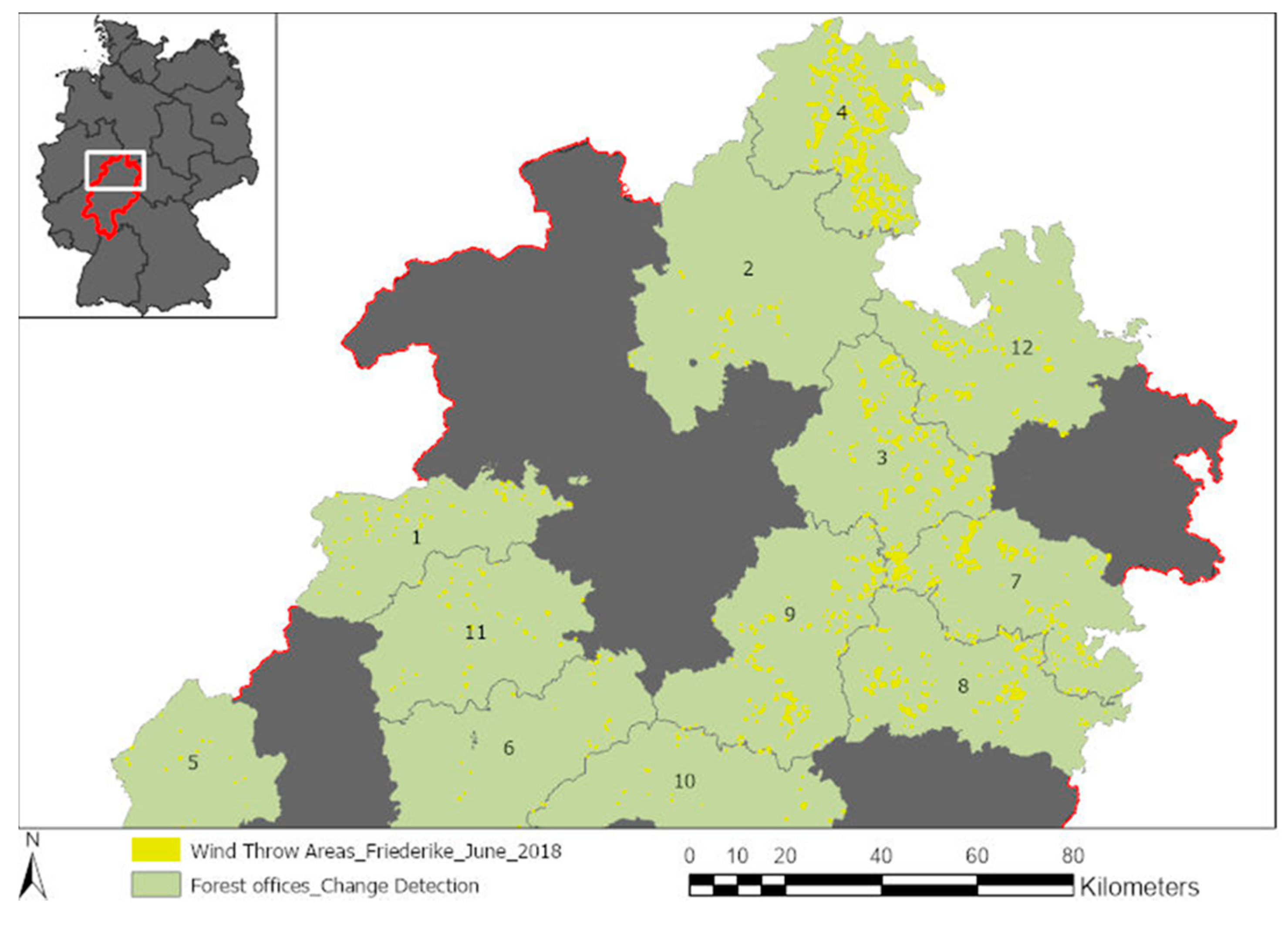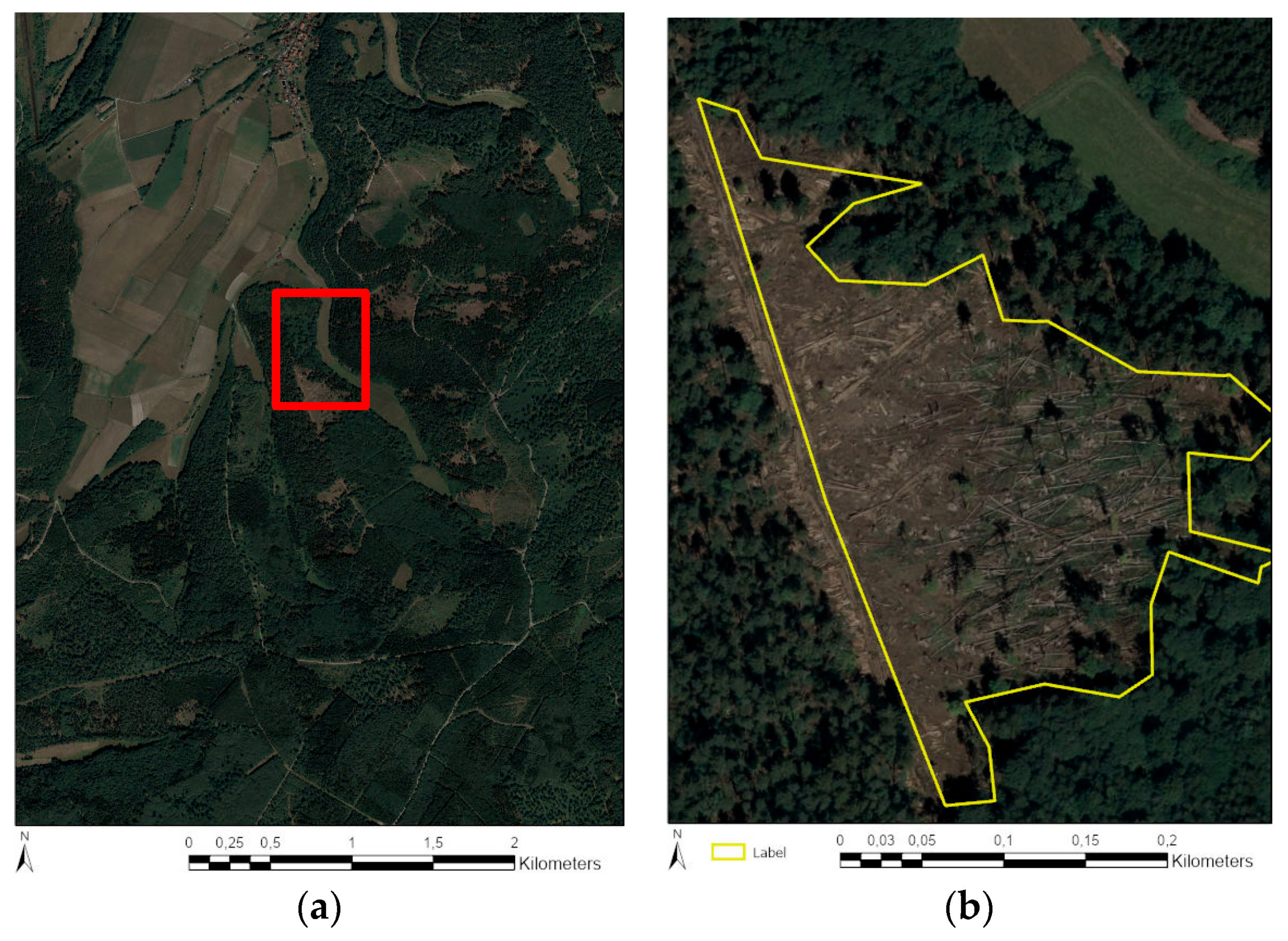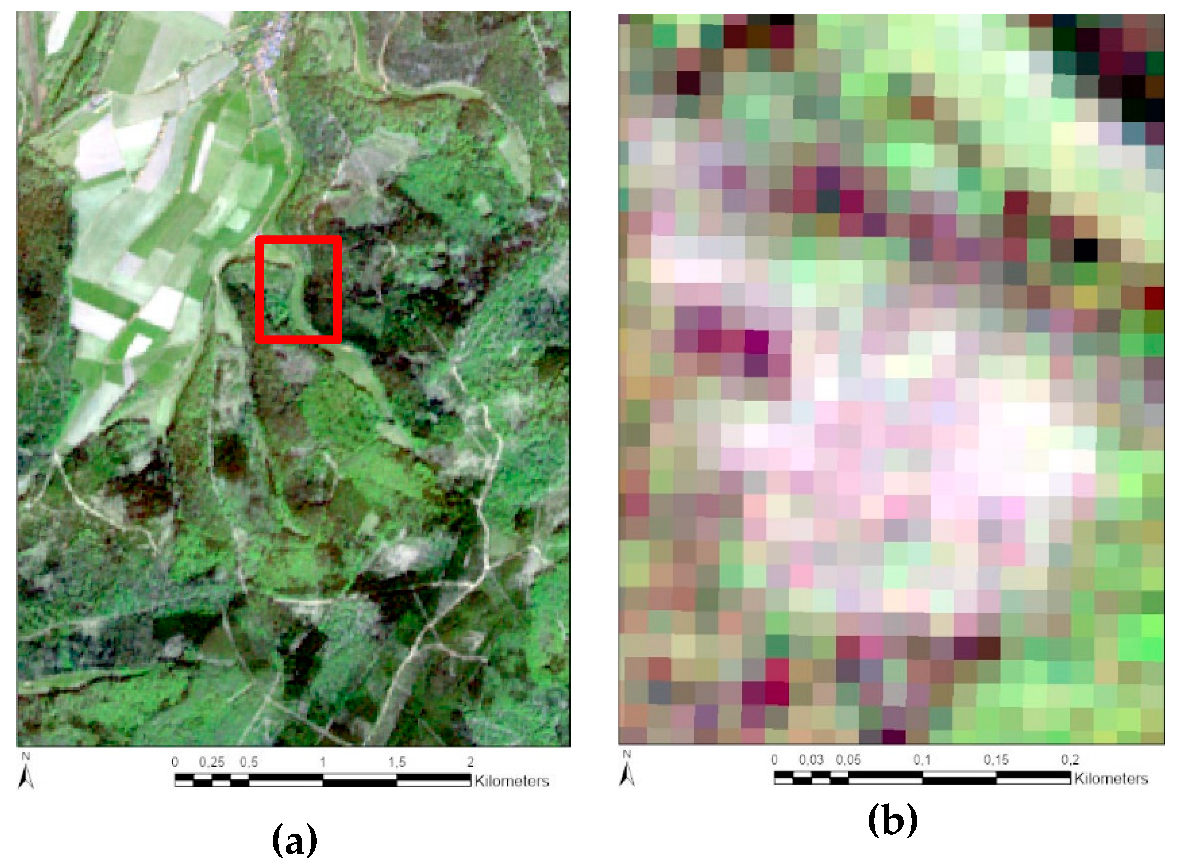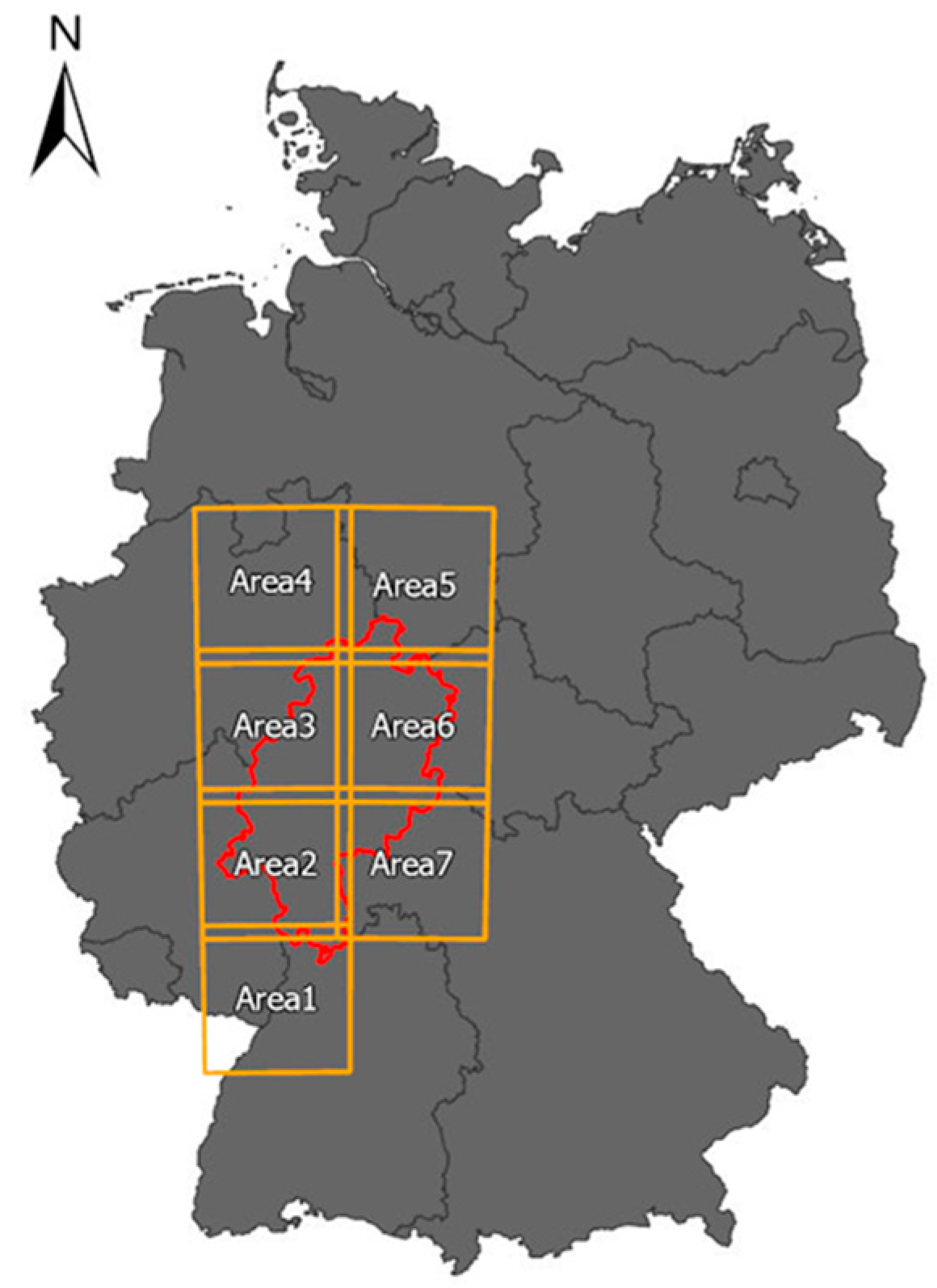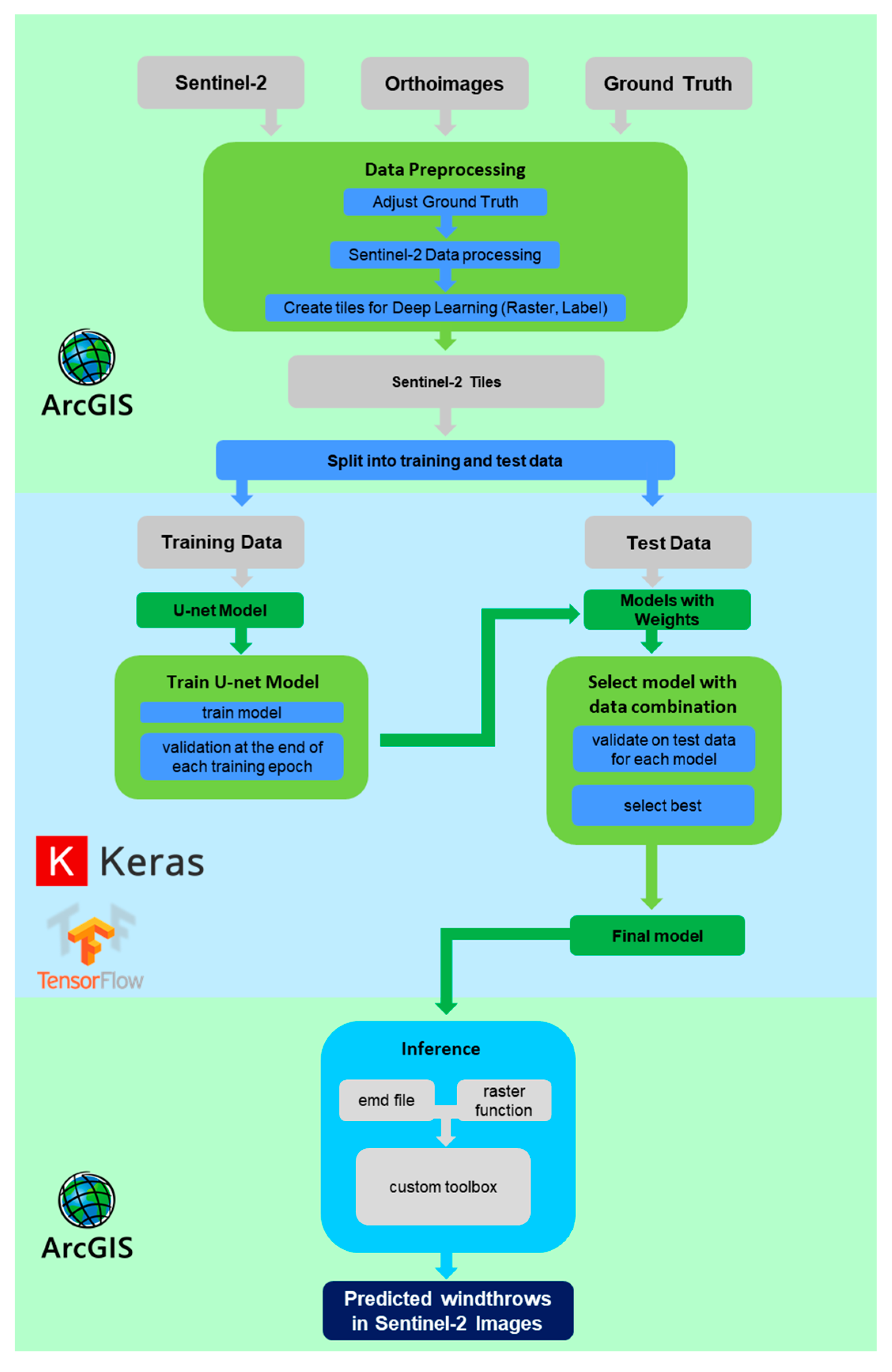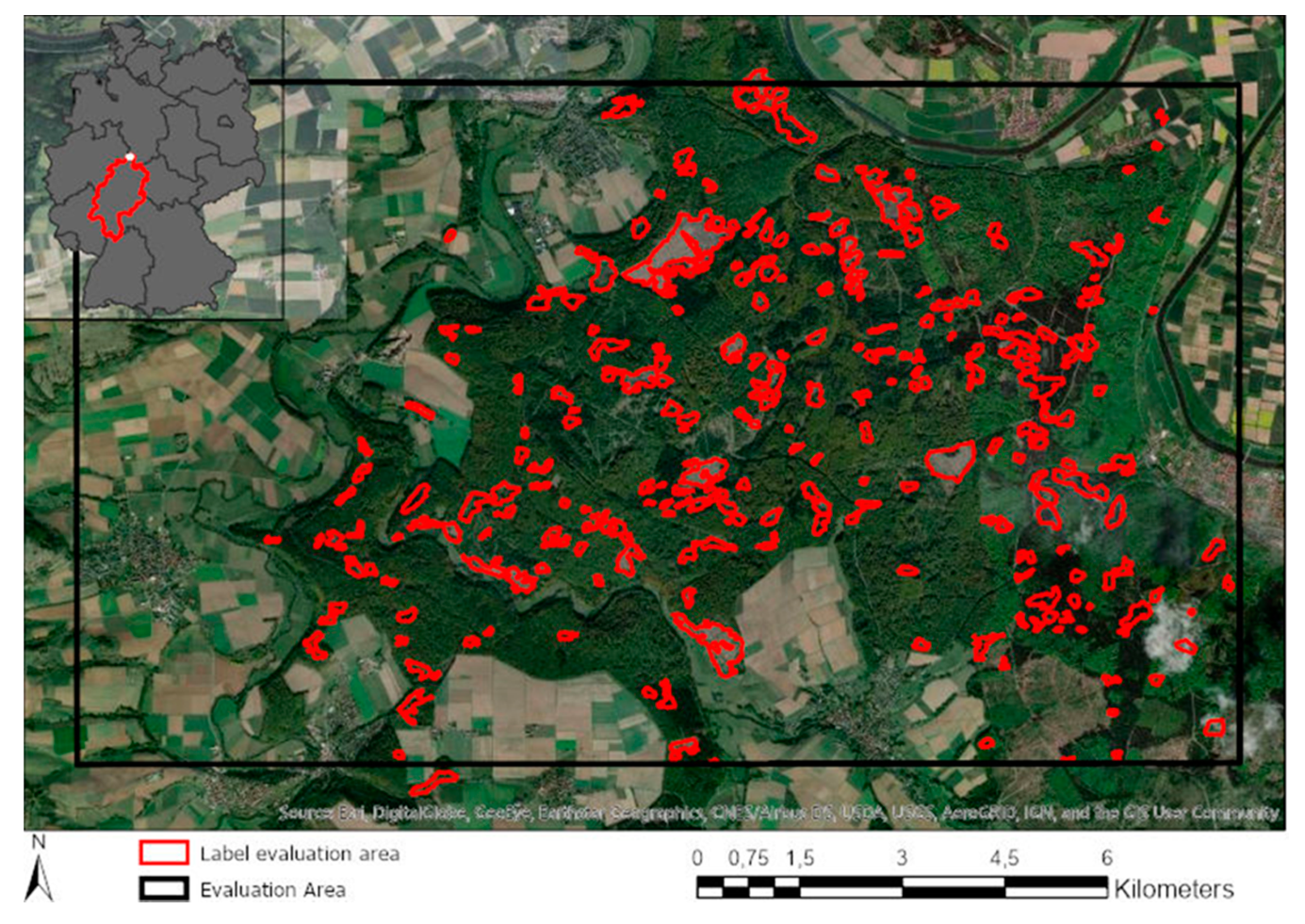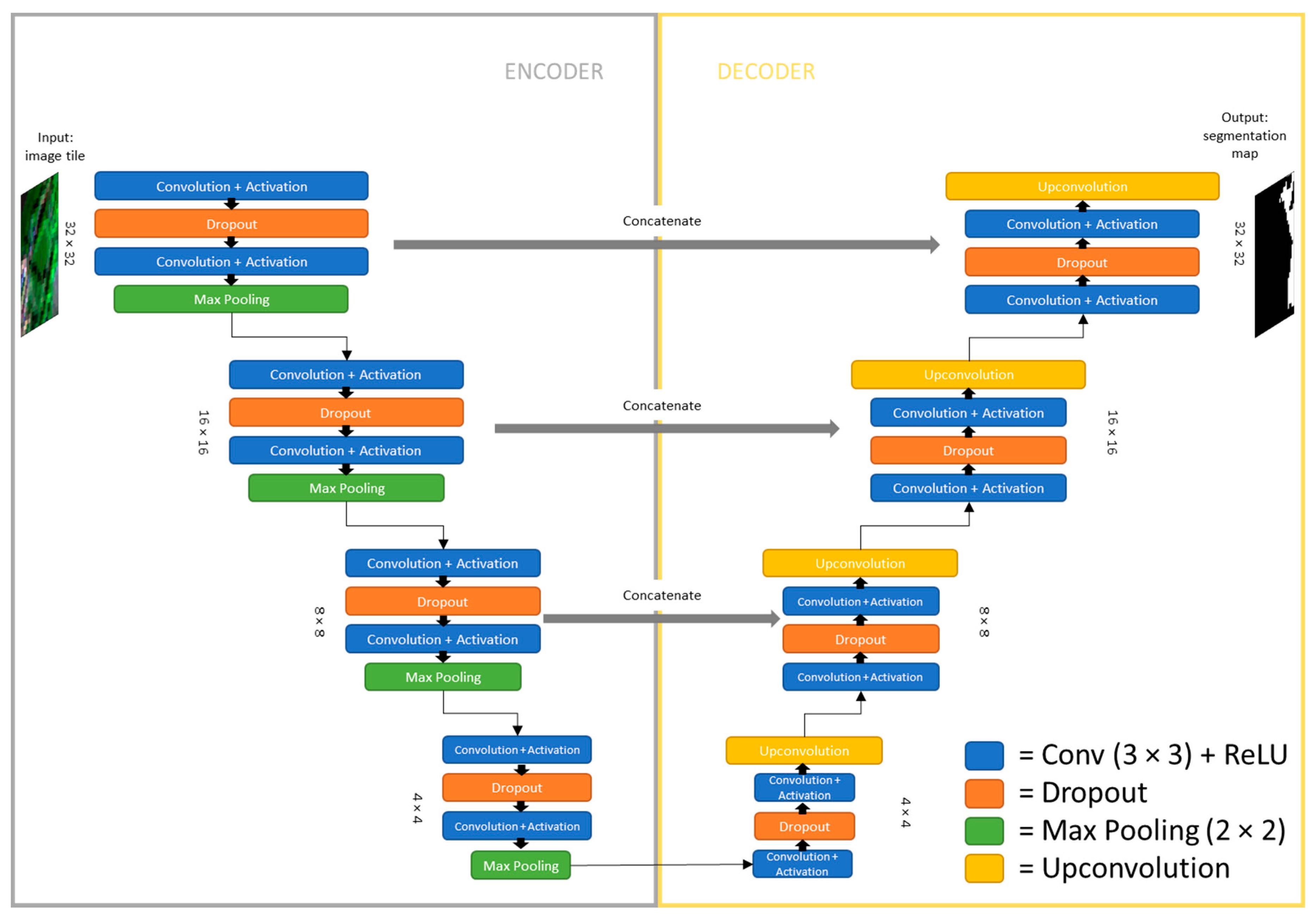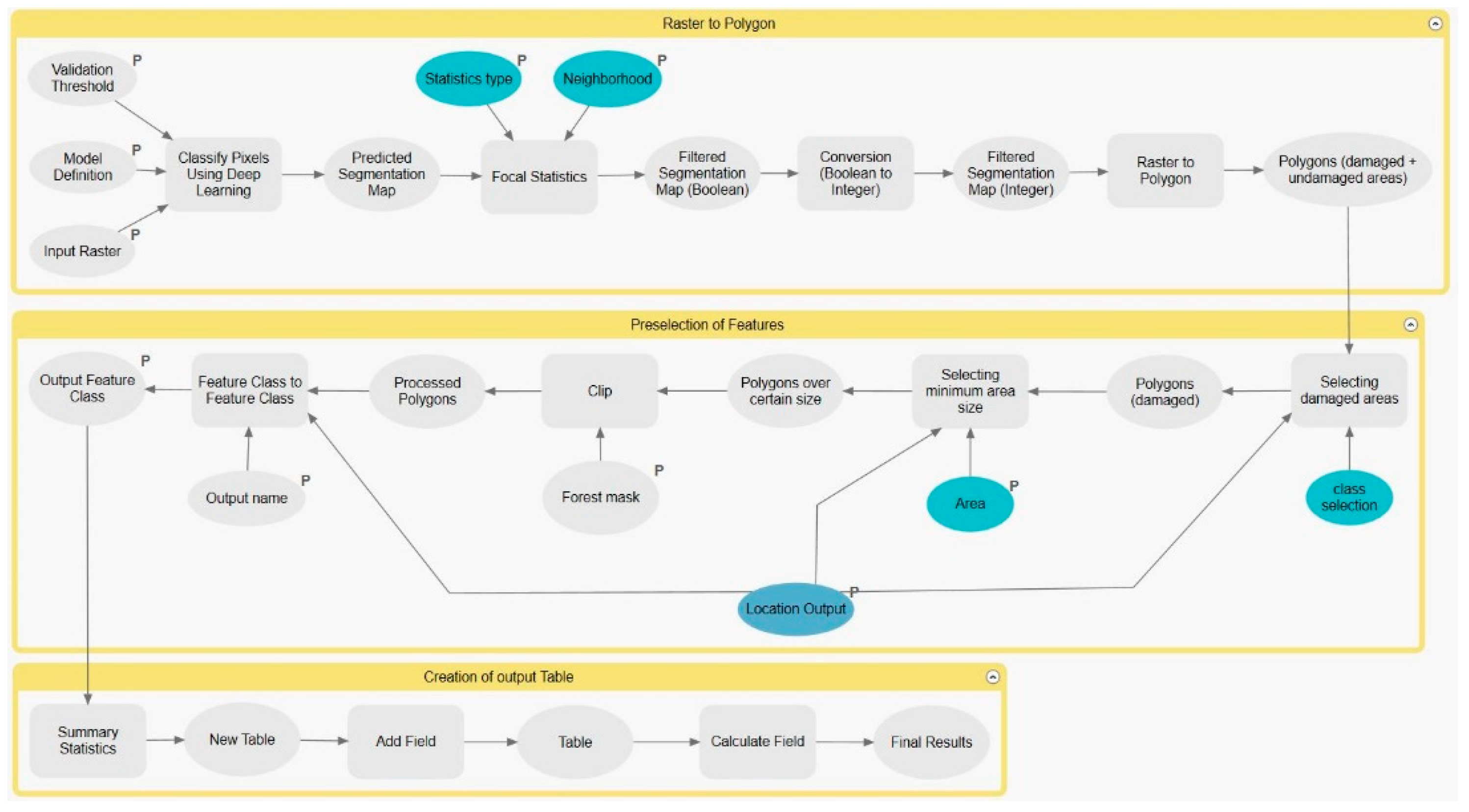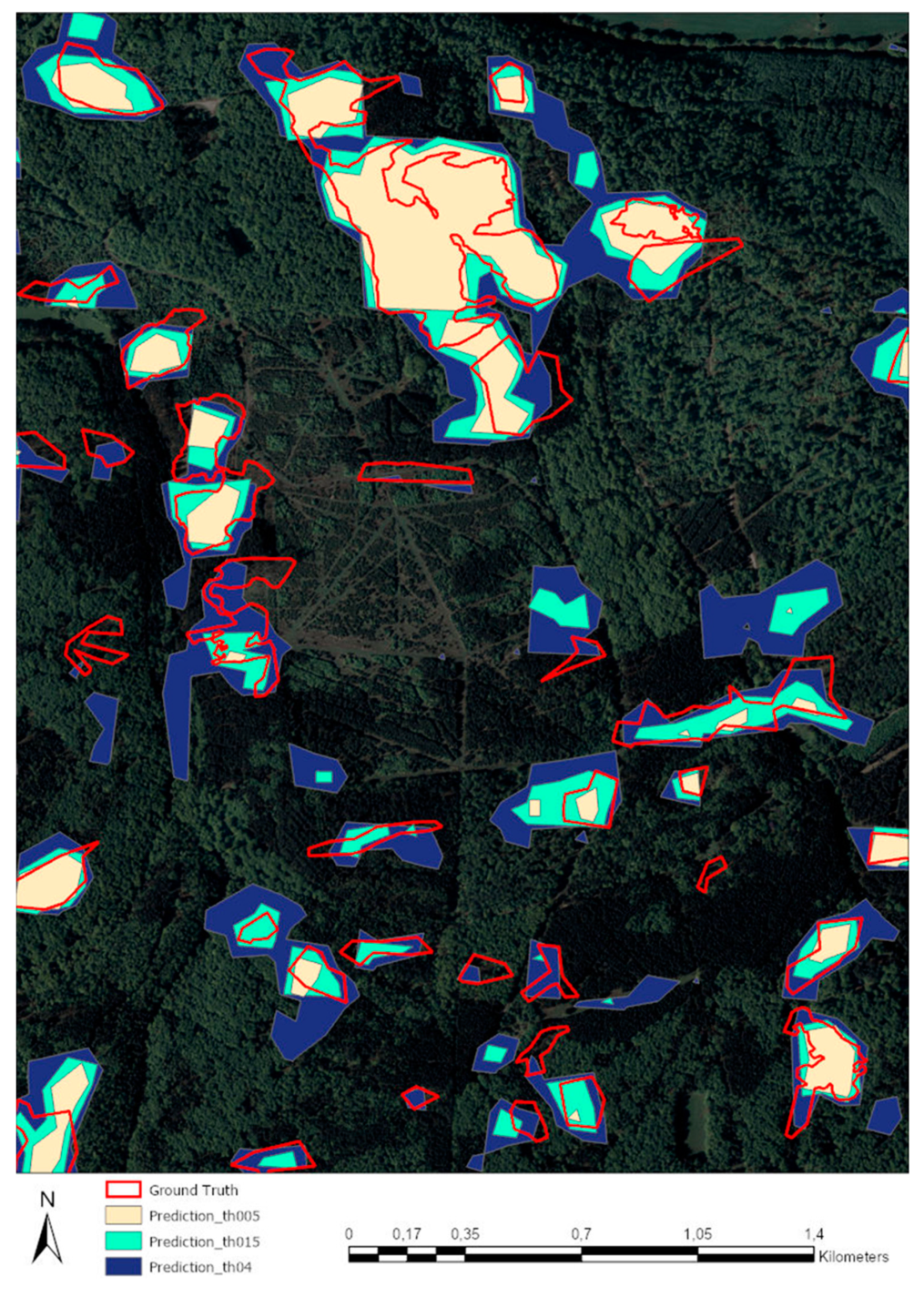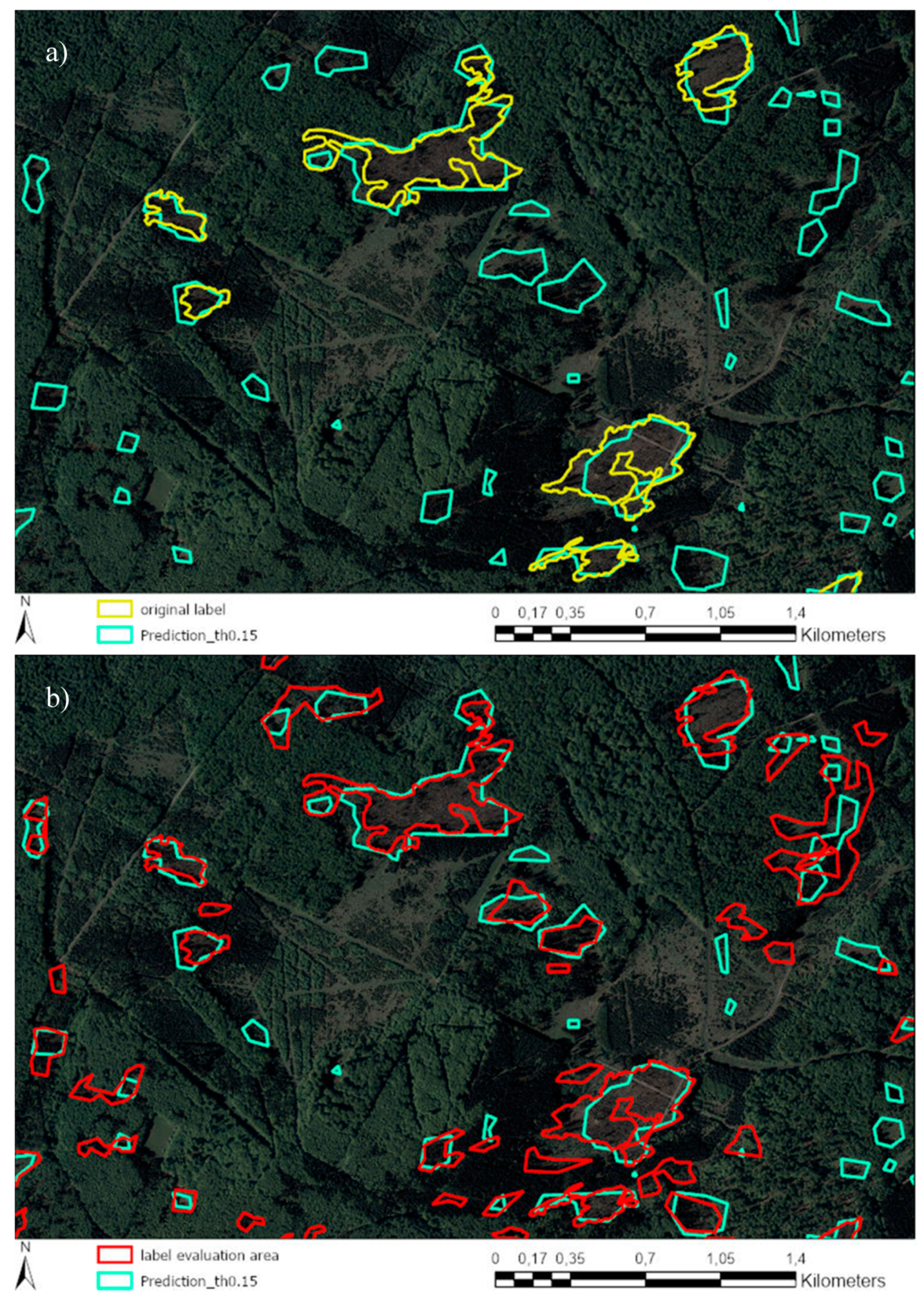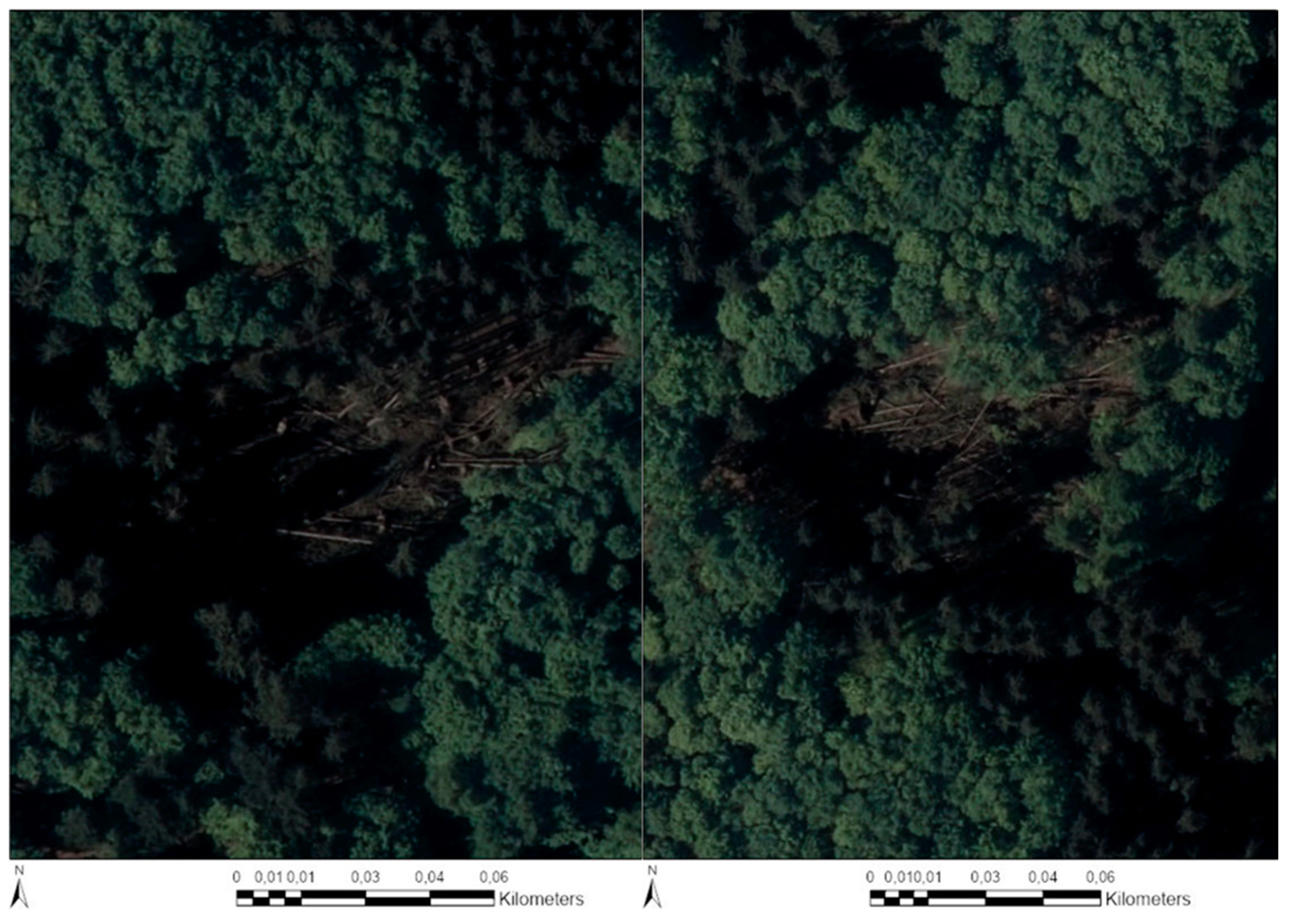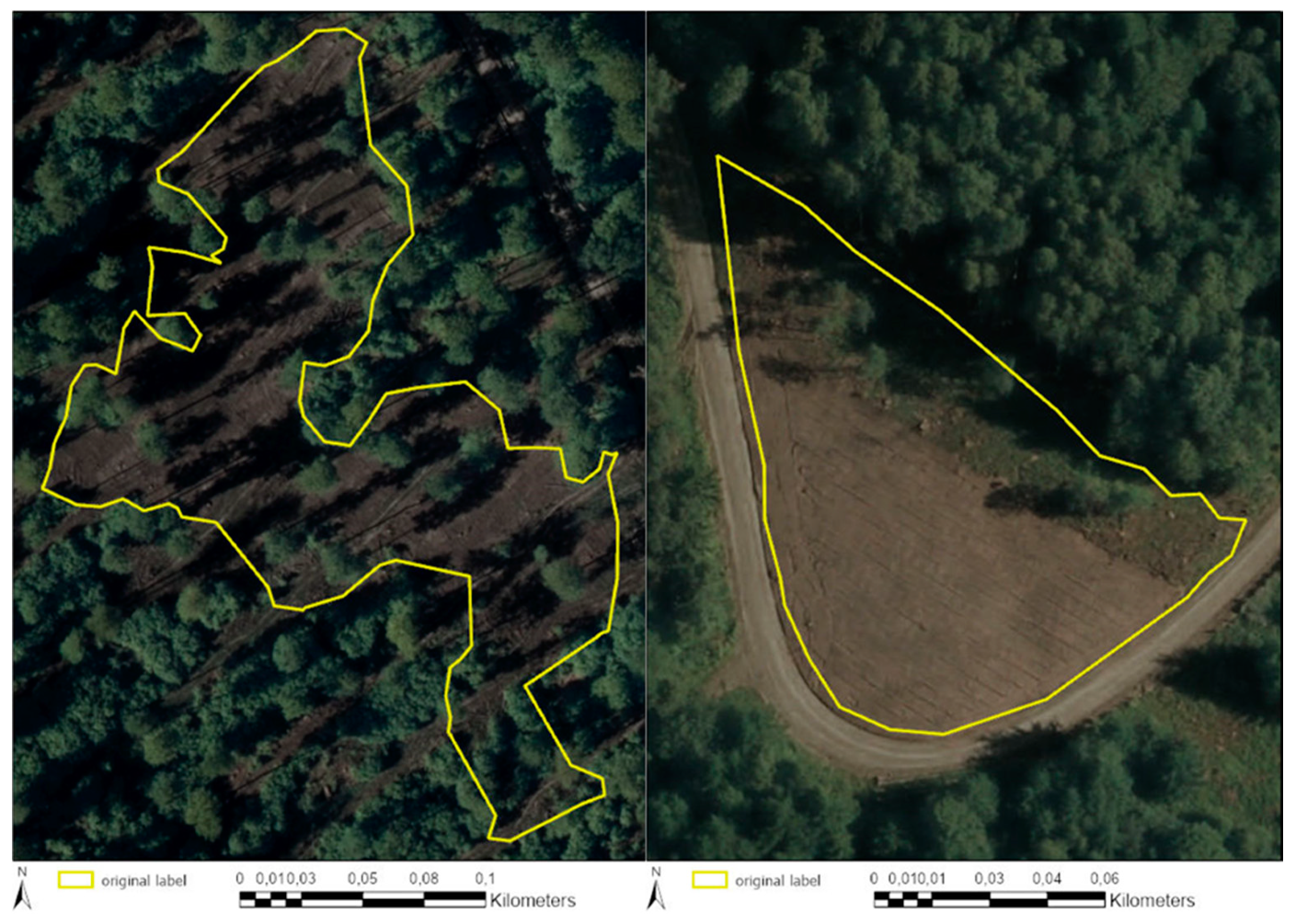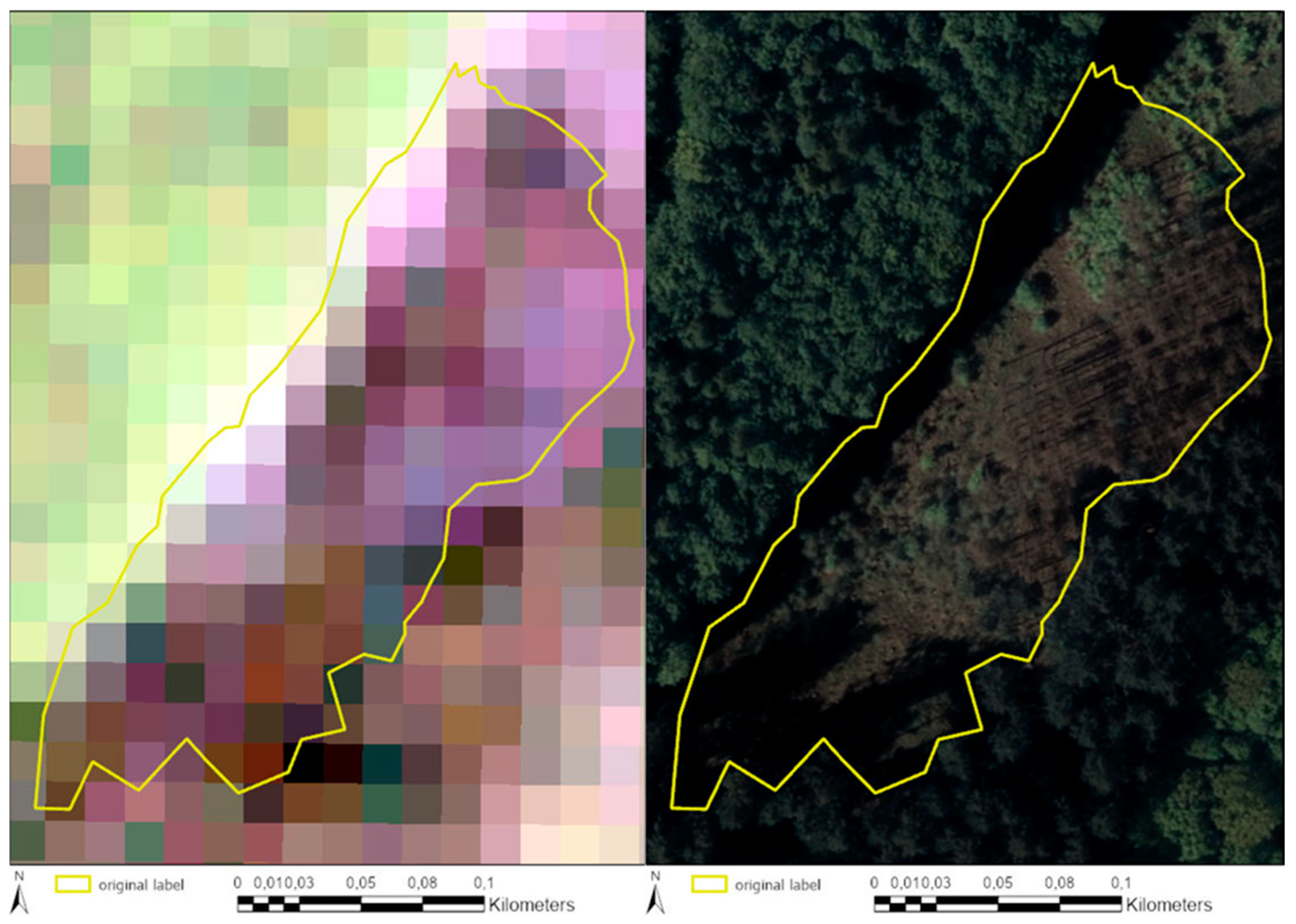1. Introduction
There has been a clearly increasing trend of storm events during the previous decades [
1,
2,
3,
4]. The most notable storms in Europe were Vivian and Wiebke in 1990, Lothar in 1999 and Kyrill in 2007 [
3]. They caused severe infrastructure damage in many European countries and had a heavy impact on forests. Winter storms are considered as the main source of damage (50%) within all unplanned logging [
5]. Scientists assume that by the end of the century the damage caused by storms in forests will double or even quadruple [
1], mostly due to climate change [
3,
6].
A common indirect effect of storms are bark beetle infestations that spread around the damaged areas. The direct correlation between bark beetle reproduction and storm damage was identified by Forster and Meier [
7]. The authors show that storms are the second most important cause for the reproduction of bark beetle populations, especially the European spruce bark beetle (
Ips typographus L.). Other studies also indicate that bark beetle proliferation is strongly favored by scattered wood, especially in spring e.g., Seidl and Rammer [
8]. To minimize the risk of bark beetles, rapid removal of deadwood is of utter importance for forest management [
7].
Besides forest and biodiversity protection, economic considerations play an important role for forest management as the price of timber for affected tree species (e.g., spruce) has deteriorated significantly after major storm events. This is due to the decreased quality [
9], but also to oversupply [
1,
10]. While larger operations have certain safeguards against falling prices because of long-term contracts, smaller operations are more affected.
Thus, a rapid response aims at minimizing economic risks for forest owners and is in accordance with the sustainable development goals (SDGs) of the United Nations (UN)—particularly the goals 13 and 15. While Goal 13 aims at directly combatting the effects of climate change, one aspect of Goal 15 is the sustainable use of forests and the prevention of degradation [
11].
A rapid response is often hindered as the extent and location of damage are not known right after the storm and time goes by until, for example, a flight campaign provides aerial images [
12]. Initial information is, thus, mainly based on subjective, terrestrial, time-consuming estimates or surveys [
12]. Remote sensing using satellites with a high temporal resolution is becoming increasingly important in damage assessment and there exist numerous studies about change detection based on such data and a brief overview will be given in the following [
12,
13].
Generally, two types of sensors are used and sometimes combined: active sensors such as synthetic aperture radar (SAR) and airborne laser scanning (ALS) and passive sensors, which are mostly multispectral images obtained from airborne systems or satellites.
Using L-band space-born SAR [
14,
15,
16,
17], they conducted studies for windthrow detection in southern Sweden. Their goal was to detect forest areas affected by wind or insect damage. The Bavarian Forest National Park in south-eastern Germany was chosen as the test area. Depending on the date of recording and the environmental conditions, the accuracies achieved were 69–84% [
14]. In a similar study on airborne polarimetric S-band SAR by Ningthoujam et al. [
18], accuracies of 70% were reached at a spatial resolution of 6 m and 63% at a resolution of 20 m. The algorithm used was a maximum likelihood classifier. A more recent study on rapid windthrow detection focusing on Sentinel-1 C-band VV and VH polarization data obtained accuracies of 85% for area-wide windthrow and 50% for scattered windthrow [
19]. The test sites were in two mixed temperate forests in Switzerland and Northern Germany. Another study carried out by Nyström et al. [
20] in a hemi-boreal forest in southern Sweden showed accuracies of up to 82% for trees above 27 m. For the detection of damaged trees, the change between digital elevation models from high density (65 points/m
2) ALS data was used [
20]. In two other studies a combination of active and passive sensor data was utilized. With this approach Honkavaara et al. [
13] achieved 100% accuracy for test plots with more than ten lying logs at a study area in Finland. Test plots with minor damage and low damage were correctly predicted as damaged by 52% and 36% respectively based on change detection using digital surface models (DSMs) [
13]. While Honkavaara et al. [
13] used high-altitude photogrammetric imagery in combination with ALS, Mokroš et al. [
21] highlights the use of ALS and unmanned aerial systems (UAS) with accuracies of 85%.
Data from passive sensors can be used for damage assessment in an object-based approach such as described by Duan et al. [
22], Chehata et al. [
23] and Chehata et al. [
24], or in a pixel-based classification as presented in the studies by Haidu et al. [
25] and Zhu et al. [
26] or a combination of both methods [
27]. Object-based approaches are more suitable for detecting objects consisting of several pixels in high-resolution data [
23,
27,
28]. Duan et al. [
22], for example, describe a single trunk detection method based on high-resolution UAV data with an accuracy of 92.5%.
Deca-meter satellite data is more suited for monitoring tasks such as forest disturbance on a larger scale including a pixel-based time-series approach using Landsat data presented by Zhu et al. [
26]. Similarly, Haidu et al. [
25] was able to detect scattered windthrows in the Vosges Mountains with an accuracy of 86% based on Landsat data. Furthermore, Chehata et al. [
23] and Chehata et al. [
24] describe a nearly automated approach based on unsupervised multitemporal classification resulting in an accuracy of 87.2. Sentinel-2 data was used by Einzmann et al. [
27] in a two-step approach, which detected both extensive and small-scale windthrow. In a first step, they used an object-oriented approach for the detection of larger areas. In a second step, the recognition of small areas was done on a pixel level. An accuracy of over 90% was achieved for areas larger than 0.5 ha.
As time is a crucial factor for forest management, the combination of temporally high-resolution data such as Sentinel-2 that is freely available, and highly efficient algorithms from computer vison have a high potential to improve previous approaches. Studies based on deep-learning approaches for windthrow detection are still sparse and used very high-resolution images (0.2–3 m) with overall accuracies of 92% [
29] and 86% [
30]. To the authors knowledge, there exist no deep-learning studies on calamity assessment based on deca-meter multispectral data, such as Sentinel-2 data of the Copernicus program. In the present study we close this gap by providing extensive experiments on data from the storm Friedericke.
